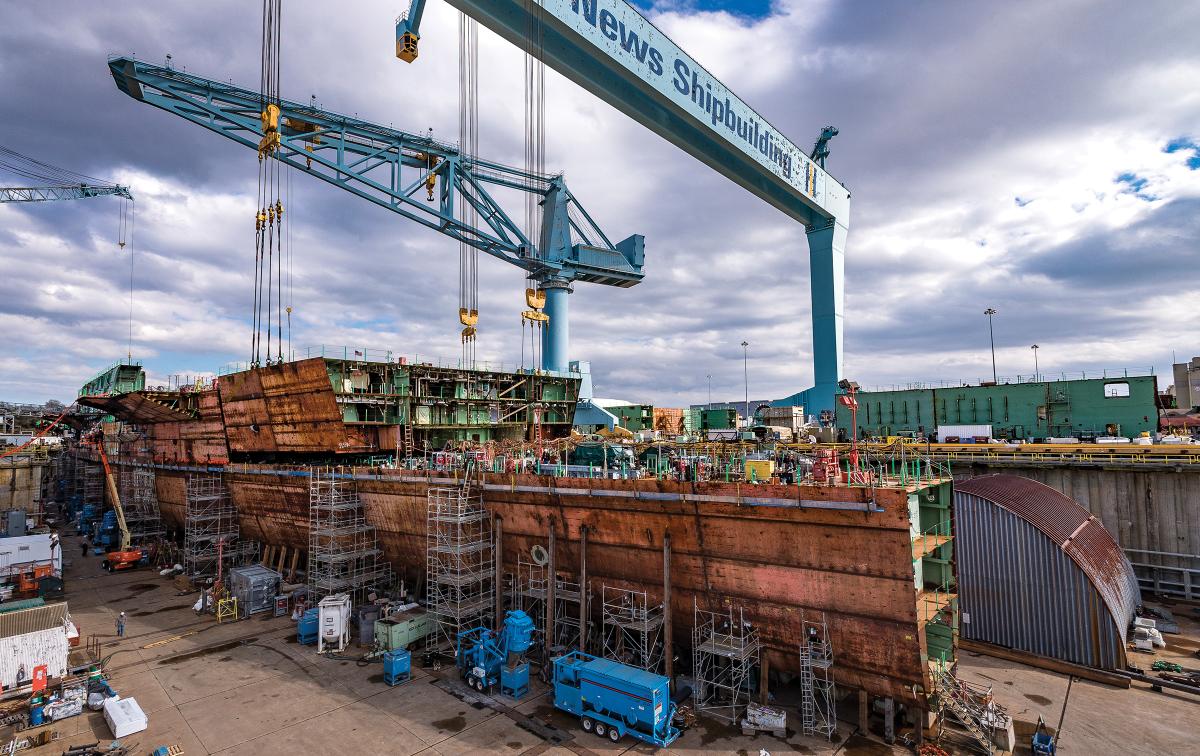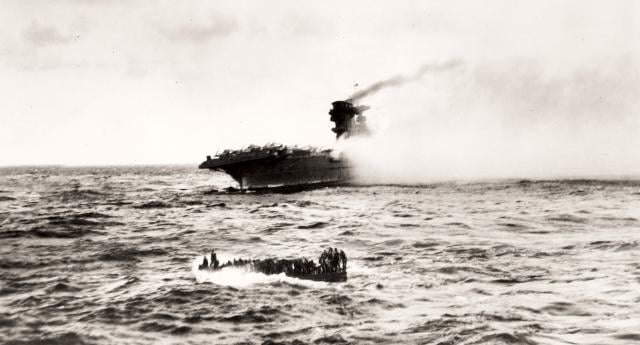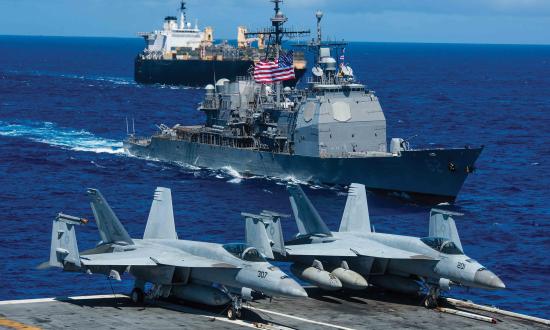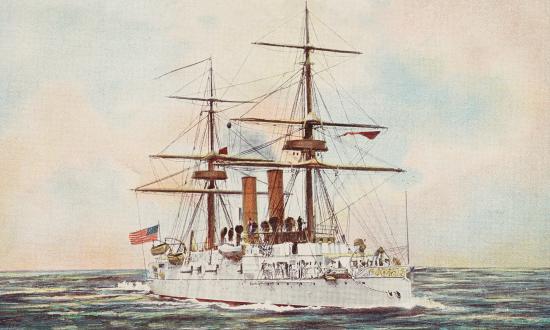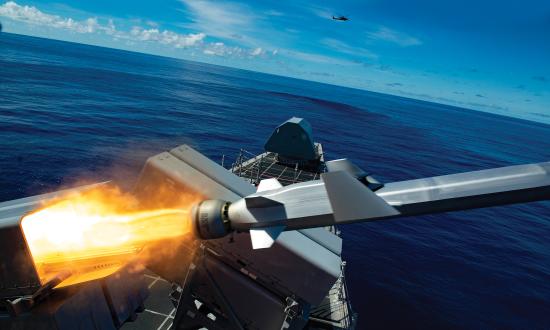Navy Prepares to Slash Funding for New Warships.”1 “Navy Proposes Slashing Shipbuilding Budget by $4 Billion.”2 “Fixing First Four Littoral Combat Ships Not Worth It, U.S. Navy Says.”3 “Pentagon Says Shipbuilding Money Routed to Border Barrier Was Early to Need, Shipyard Disagrees.”4
Headlines such as these splashed across the news since the beginning of 2020 are troubling for a force that claims it wants to be ready to fight and win tonight. Despite the official national policy to build toward a 355-ship Navy, the service has decided to focus on current readiness at the expense of future capabilities. This decision is shortsighted and endangers the ability of fleet commanders to boldly execute war at sea.
Chief of Naval Operations (CNO) Admiral Mike Gilday says he is prepared to build toward a 355-ship fleet if given more money. But as long as the Navy’s budget remains flat, his priorities will remain current readiness and manpower—warfighting and warfighters, in the parlance of his December 2019 fragmentary order.5 This decision limits the Navy’s ability to address the CNO’s third line of effort—the future force. Specifically, limiting new construction causes shipbuilding infrastructure to atrophy. And, in near-peer naval combat, it severely reduces the nation’s ability to absorb and rapidly replace losses.
Unless future naval conflicts are brief, the inability to replace combat losses will lead to defeat, regardless of how combat-ready U.S. ships or battle-minded U.S. crews are. Today’s ships depend on defeating enemy weapons before they hit, which leaves the ships vulnerable to salvos of missiles that overwhelm defenses. U.S. ships will take hits. Though shipboard damage-control efforts may keep them afloat, damage from even a single missile strike is likely to render a ship combat ineffective. What then? How does the fleet commander replace these losses? When will damaged ships return to the fight?
Bolstering Boldness in World War II
The Navy of the 1930s faced similar challenges balancing new ship construction, current readiness, and manpower. The fiscal austerity and isolationist policies of successive presidential administrations in the 1920s caused a contraction in U.S. shipbuilding and the loss of significant infrastructure and expertise. At the same time, the Navy struggled to keep ships manned and maintained, so ships were placed in reduced status on a rotating basis to save money.
The chairman of the House Armed Services Committee at the time, Representative Carl Vinson (D-GA), recognized the danger of allowing the shipbuilding industry to atrophy. The combination of President Franklin D. Roosevelt’s Executive Order 6174 and the 1934 Vinson-Trammell Act—both driven by Vinson’s advocacy for a strong Navy—restarted the U.S. warship-building industry and allowed the nation’s shipyards to recover in advance of World War II.6
Building a fleet takes time, so when a nation goes to war, its navy must fight with the ships it has. The U.S. Navy in December 1941 was a result of the aggressive fleet-building plan begun in 1933. More important, by sustaining that building plan, the Navy had more than 100 warships under construction when the Japanese attacked Pearl Harbor.
Although the Imperial Japanese Navy outnumbered his Pacific Fleet, Admiral Chester Nimitz knew there were more ships on the way and could pursue a campaign in the Pacific using calculated risk to counter Japanese expansion.8 With this knowledge, he boldly committed his scarce carriers to stop the Japanese invasion of Port Moresby at the Battle of the Coral Sea, and then exploited intelligence about the Japanese planned invasion of Midway to defeat the Kidō Butai. How might Nimitz have fought the opening months of the war in the Pacific had those ships not been under construction? Would he have risked his vital carriers to thwart the Japanese advance on Port Moresby? Would he have sent his remaining undamaged carriers to face a potentially superior force at Midway?7
In the first year of the war, the Pacific Fleet lost four of the seven fleet carriers in commission on 7 December 1941, with two others severely damaged.9 That was 85 percent of the force out of action. But there also were 11 carriers under construction, more than enough to make good the losses of 1942. In contrast, the Japanese had no carriers under construction when they began their Pacific offensive. Their loss of four carriers at Midway resulted in a frantic attempt to replace them by converting merchant and warship hulls into fleet carriers and to build copies of the lost Hiryu. In the end, these projects were unable to restore the Imperial Japanese Navy’s striking power because they started too late.
A similar comparison can be made with cruisers lost in the Solomon Islands campaign. The United States committed almost all of its prewar cruisers stationed in the Pacific to the defense of Guadalcanal. The result was the loss of five heavy and three light cruisers.10 Another six cruisers were severely damaged and put out of combat for several months. Like the carriers, the ships lost in this campaign were in the fleet when the Japanese attacked Pearl Harbor, and they represented a significant percentage of the total force when they were committed to battle. As with the carriers, replacements were already on the building ways, with more than 40 cruisers under construction that would soon replace all the ships lost in the Solomons, and then some.
The Future Force
Today, the Navy is at a crossroads—which path should it take? Follow the lesson from the Vinson-Trammel Act to build now and be prepared with ships on the ways if hostilities start, or plan like Japan and wait until hostilities start to build the replacement fleet? This is not meant to conflate the 1930s with the 2020s—the world situation is very different. Yet, while national intent to start or prevent war differs greatly, the preparation for sustained naval combat is the same. Historian Cathal Nolan posits that wars are not won by decisive battles or military genius, but by attrition. He argues that regardless of the great battles fought in a war, it is the whittling away of warfighting capacity that causes wars to end. In a war of attrition, the side with the greatest ability to absorb losses is the victor.11 For naval warfare, this means the salvage and repair of damaged vessels and replacement of losses with new construction—both actions that require significant shipyard capabilities, whether expeditionary or static.
The late naval theorist retired Captain Wayne Hughes reminds us that naval combat is violent and quick, and battles are most often won dramatically by the force that possesses the slightest advantage. The Falkland’s War showed just how violent and catastrophic naval combat in the missile age can be. HMS Sheffield was lost to a single Exocet missile, and, in total, the British lost seven ships in less than three months of combat.
Even the U.S. Navy’s combat damage over the past four decades has rendered ships inoperable for months at a time. The USS Stark (FFG-31), Samuel B. Roberts (FFG-58), Princeton (CG-59), Tripoli (LPH-10), and Cole (DDG-67) all were rendered hors de combat by a single weapon.12 While each ship eventually was repaired, it took months to return them to stateside repair facilities and an average of 14 months in the shipyard to return the ships to the fleet. Further, each damaged ship displaced shipbuilding capability at the few shipyards building new warships.
Whether 355 is the right number for the fleet of the future can be debated. It could be argued that maintaining the current fleet of 290 ships at the highest possible state of readiness provides more warfighting capability than unready ships combined with ships under construction. This appears to be the Navy’s logic, spending the flat budget to keep the ships in hand fully ready at the expense of the future force. Unfortunately, by neglecting the future force, the United States puts at risk its ability to sustain a war at sea. Perhaps former Acting Secretary of the Navy Thomas Modly’s aim of rapidly identifying $40 billion in savings will ease the need to sacrifice future capability to current readiness, but the responsibility lies with Congress as well.13 The goal of 355 ships is congressionally mandated. It is their responsibility to fund the shipbuilding account to make that happen, and this funding must be in addition to the budget needed to maintain the current force.
Forcing the Navy to choose between warfighting, warfighters, and the future force risks its ability to fight and win wars. Without confidence in the ability to recoup losses, future commanders’ calculated risks will lean toward caution, not boldness. To support the bold action of U.S. commanders, the nation must sustain its shipbuilding infrastructure. As Congress and the President identified back in the 1930s, the way to keep shipbuilders investing in the future is with consistent, predictable shipbuilding budgets and warship orders.
1. Lara Seligman, “Navy Prepares to Slash Funding for New Warships,” Foreign Policy, 10 February 2020, foreignpolicy.com/2020/02/10/navy-prepares-cut-funding-new-warships-20-percent-budget/.
2. Yasmin Tadjdeh, “Navy Proposes Slashing Shipbuilding Budget by $4 Billion,” National Defense, 10 February 2020, nationaldefensemagazine.org/articles/2020/2/10/budget-2021-navy-proposes-slashing-shipbuilding-budget-by-4-billion.
3. David Larter, “Fixing First Four Littoral Combat Ships Not Worth It, U.S. Navy Says,” Defense News, 12 February 2020, defensenews.com/naval/2020/02/12/upgrading-the-first-four-littoral-combat-ships-not-worth-the-money-us-navy-says/.
4. Ben Werner, “Pentagon Says Shipbuilding Money Routed to Border Barrier Was Early to Need, Shipyard Disagrees,” USNI News, 19 February 2020, news.usni.org/2020/02/19/pentagon-says-shipbuilding-money-routed-to-border-barrier-was-early-to-need-shipyard-disagrees.
5. Sam LaGrone, “CNO Gilday Calls for Budget Increase to Reach 355 Ship Fleet; New Battle Force Count Won’t Include Unmanned Ships,” USNI News, 14 January 2020, news.usni.org/2020/01/14/cno-gilday-calls-for-budget-increase-to-reach-355-ship-fleet-new-battle-force-count-wont-include-unmanned-ships.
6. See CAPT James McGrath, USN (Ret.), “Peacetime Naval Rearmament, 1933–39: Lessons for Today,” Naval War College Review 72, no. 2, article 7, digital-commons.usnwc.edu/nwc-review/vol72/iss2/7.
7. See CAPT James McGrath, USN (Ret.), “Would Nimitz Win a Midway Today?” U.S. Naval Institute Proceedings 144, no. 6 (June 2018), usni.org/magazines/proceedings/2018/june/would-nimitz-win-midway-today.
8. McGrath, “Would Nimitz Win a Midway Today?”
9. The seven carriers were the USS Lexington (CV-2), lost at the Battle of the Coral Sea, 8 May 1942; USS Saratoga (CV-3); USS Ranger (CV-4); USS Yorktown (CV-5), lost at the Battle of Midway, 7 June 1942; USS Enterprise (CV-6); USS Wasp (CV-7), lost to a torpedo attack, 15 September 1942; and USS Hornet (CV-8), lost at the Battle of Santa Cruz, 27 October 1942.
10. Two of those losses, the USS Chicago (CA-29) and Helena (CL-50), occurred in 1943, after the conclusion of the Guadalcanal campaign, but as part of the broader Solomons campaign.
11. Cathal J. Nolan, “Wars Are Not Won by Military Genius or Decisive Battles,” Aeon, 5 May 2017, aeon.co/ideas/wars-are-not-won-by-military-genius-or-decisive-battles.
12. The Princeton and Tripoli were able to remain on station meeting mission tasking until relieved by other ships, but required extensive repairs for continued operation. The recent collision damage to the USS John S. McCain (DDG-56) and Fitzgerald (DDG-62) also took almost two years to repair.
13. Craig Hooper, “Valentine’s Day Massacre: U.S. Navy Eliminating $40 Billion In 6 Weeks,” Forbes, 14 February 2020, forbes.com/sites/craighooper/2020/02/14/valentines-day-massacre-us-navy-eliminating-40-billion-in-6-weeks.



